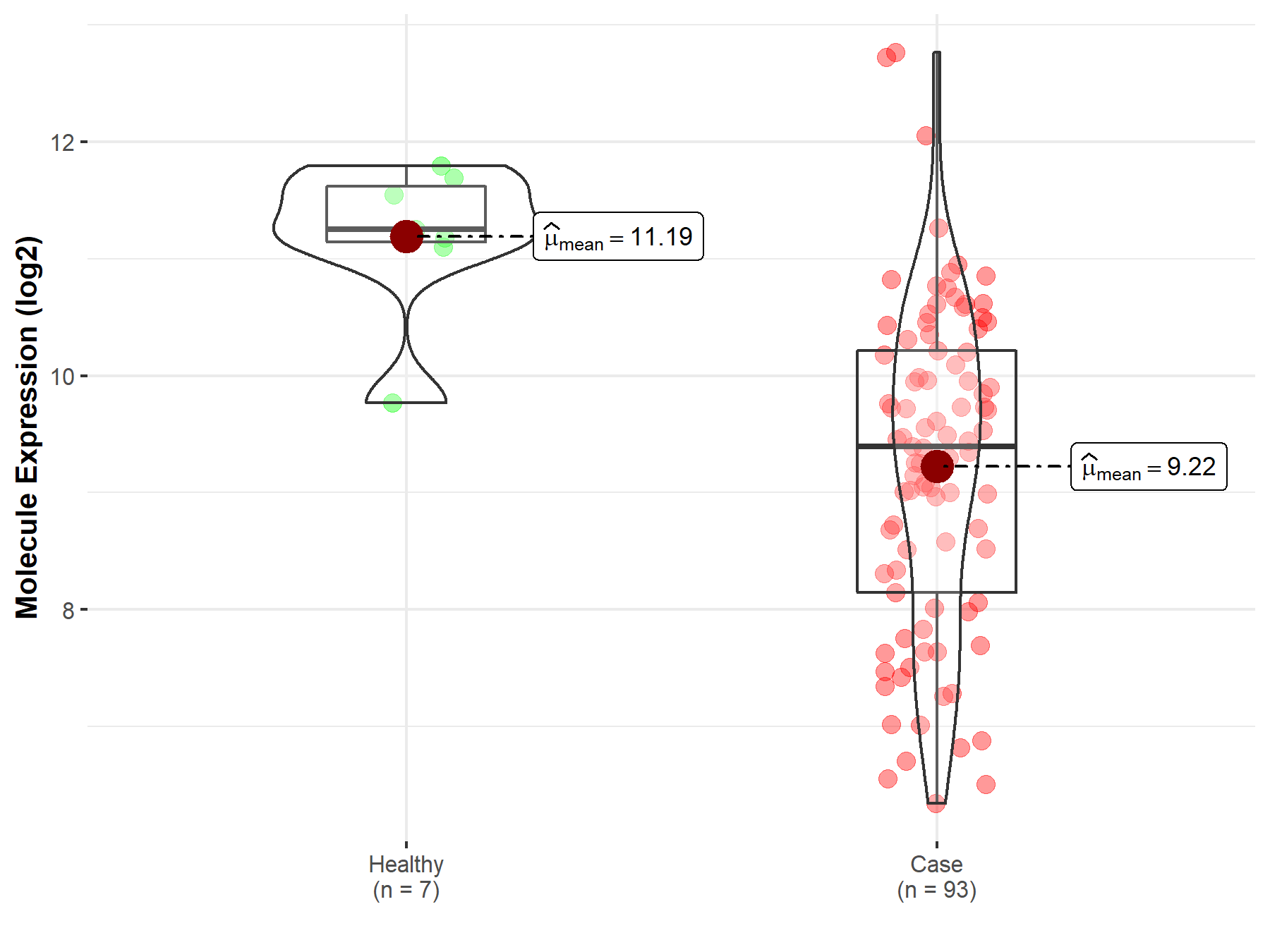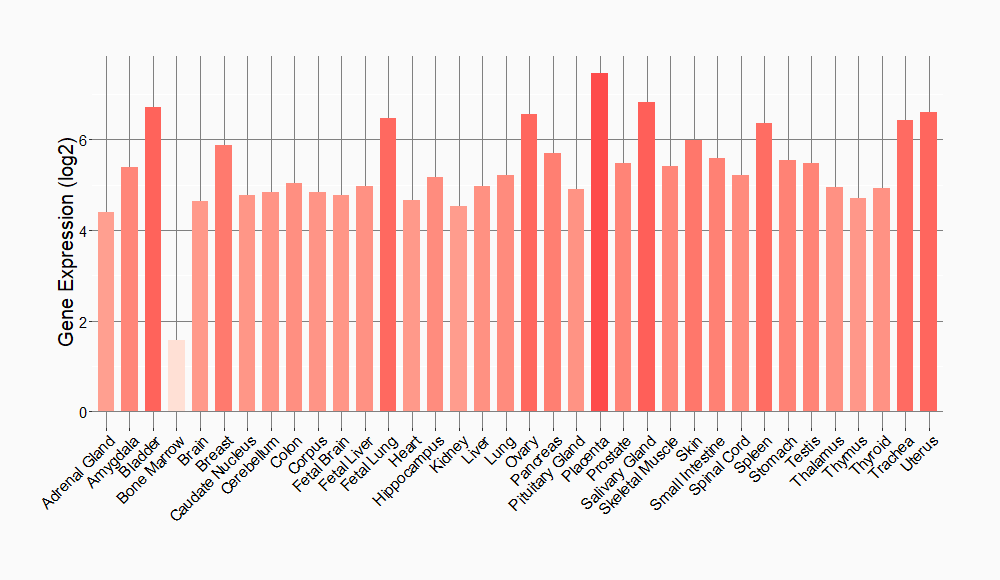Molecule Information
General Information of the Molecule (ID: Mol00706)
| Name |
Protein Wnt-5a (WNT5A)
,Homo sapiens
|
||||
|---|---|---|---|---|---|
| Molecule Type |
Protein
|
||||
| Gene Name |
WNT5A
|
||||
| Gene ID | |||||
| Location |
chr3:55465715-55490539[-]
|
||||
| Sequence |
MKKSIGILSPGVALGMAGSAMSSKFFLVALAIFFSFAQVVIEANSWWSLGMNNPVQMSEV
YIIGAQPLCSQLAGLSQGQKKLCHLYQDHMQYIGEGAKTGIKECQYQFRHRRWNCSTVDN TSVFGRVMQIGSRETAFTYAVSAAGVVNAMSRACREGELSTCGCSRAARPKDLPRDWLWG GCGDNIDYGYRFAKEFVDARERERIHAKGSYESARILMNLHNNEAGRRTVYNLADVACKC HGVSGSCSLKTCWLQLADFRKVGDALKEKYDSAAAMRLNSRGKLVQVNSRFNSPTTQDLV YIDPSPDYCVRNESTGSLGTQGRLCNKTSEGMDGCELMCCGRGYDQFKTVQTERCHCKFH WCCYVKCKKCTEIVDQFVCK Click to Show/Hide
|
||||
| Function |
Ligand for members of the frizzled family of seven transmembrane receptors. Can activate or inhibit canonical Wnt signaling, depending on receptor context. In the presence of FZD4, activates beta-catenin signaling. In the presence of ROR2, inhibits the canonical Wnt pathway by promoting beta-catenin degradation through a GSK3-independent pathway which involves down-regulation of beta-catenin-induced reporter gene expression. Suppression of the canonical pathway allows chondrogenesis to occur and inhibits tumor formation. Stimulates cell migration. Decreases proliferation, migration, invasiveness and clonogenicity of carcinoma cells and may act as a tumor suppressor. Mediates motility of melanoma cells. Required during embryogenesis for extension of the primary anterior-posterior axis and for outgrowth of limbs and the genital tubercle. Inhibits type II collagen expression in chondrocytes.
Click to Show/Hide
|
||||
| Uniprot ID | |||||
| Ensembl ID | |||||
| HGNC ID | |||||
| Click to Show/Hide the Complete Species Lineage | |||||
Type(s) of Resistant Mechanism of This Molecule
Drug Resistance Data Categorized by Drug
Approved Drug(s)
2 drug(s) in total
| Drug Sensitivity Data Categorized by Their Corresponding Mechanisms | ||||
|
|
||||
| Disease Class: Lung cancer | [1] | |||
| Sensitive Disease | Lung cancer [ICD-11: 2C25.5] | |||
| Sensitive Drug | Gefitinib | |||
| Molecule Alteration | Expression | Up-regulation |
||
| Experimental Note | Revealed Based on the Cell Line Data | |||
| Cell Pathway Regulation | Cell invasion | Inhibition | hsa05200 | |
| Cell migration | Inhibition | hsa04670 | ||
| In Vitro Model | HCC827 cells | Lung | Homo sapiens (Human) | CVCL_2063 |
| Calu1 cells | Lung | Homo sapiens (Human) | CVCL_0608 | |
| Experiment for Molecule Alteration |
Western blot analysis | |||
| Experiment for Drug Resistance |
MTS assay; Flow cytometry assay | |||
| Mechanism Description | miR-374a and miR-548b modulated by Axl have essential roles in cell cycle arrest, gefitinib-induced apoptosis, epithelial-to-mesenchymal transition, migration and tumorigenesis of gefitinib-resistant lung cancer cells in vitro and in vivo by targeting Wnt5a and CCNB1 genes, respectively. Of clinical significance, high expression of Axl and miR-374a and low expression of miR-548b are associated with poor disease-free survival postoperatively. These findings indicate that the modulation of specific miRNAs may provide a therapeutic target to treat or reverse gefitinib resistance in NSCLC with high expression of Axl in the future. Overexpression of Wnt5a in HCC827-Gef cells partially restored the cell sensitivity to gefitinib (Wnt5a in HCC827-Gef cells partially restored the cell sensitivity to gefitinib. | |||
| Drug Sensitivity Data Categorized by Their Corresponding Mechanisms | ||||
|
|
||||
| Disease Class: Bladder cancer | [2] | |||
| Sensitive Disease | Bladder cancer [ICD-11: 2C94.0] | |||
| Sensitive Drug | Gemcitabine | |||
| Molecule Alteration | Expression | Down-regulation |
||
| Experimental Note | Revealed Based on the Cell Line Data | |||
| Cell Pathway Regulation | Cell apoptosis | Activation | hsa04210 | |
| Cell viability | Inhibition | hsa05200 | ||
| In Vitro Model | SW780 cells | Bladder | Homo sapiens (Human) | CVCL_1728 |
| UM-UC-3 cells | Bladder | Homo sapiens (Human) | CVCL_1783 | |
| Experiment for Molecule Alteration |
Western blot analysis | |||
| Experiment for Drug Resistance |
MTT assay; Flow cytometry assay | |||
| Mechanism Description | miR-129-5p inhibits gemcitabine resistance and promotes cell apoptosis of bladder cancer cells by downregulating Wnt5a. | |||
Disease- and Tissue-specific Abundances of This Molecule
ICD Disease Classification 02

| Differential expression of molecule in resistant diseases | ||
| The Studied Tissue | Lung | |
| The Specified Disease | Lung cancer | |
| The Expression Level of Disease Section Compare with the Healthy Individual Tissue | p-value: 2.08E-09; Fold-change: 3.73E-01; Z-score: 6.56E-01 | |
| The Expression Level of Disease Section Compare with the Adjacent Tissue | p-value: 2.77E-12; Fold-change: 5.95E-01; Z-score: 8.80E-01 | |
|
Molecule expression in the normal tissue adjacent to the diseased tissue of patients
Molecule expression in the diseased tissue of patients
Molecule expression in the normal tissue of healthy individuals
|
||
| Disease-specific Molecule Abundances |

|
Click to View the Clearer Original Diagram |
| Differential expression of molecule in resistant diseases | ||
| The Studied Tissue | Bladder tissue | |
| The Specified Disease | Bladder cancer | |
| The Expression Level of Disease Section Compare with the Healthy Individual Tissue | p-value: 4.79E-05; Fold-change: -1.86E+00; Z-score: -2.74E+00 | |
|
Molecule expression in the diseased tissue of patients
Molecule expression in the normal tissue of healthy individuals
|
||
| Disease-specific Molecule Abundances |

|
Click to View the Clearer Original Diagram |
Tissue-specific Molecule Abundances in Healthy Individuals


|
||
References
If you find any error in data or bug in web service, please kindly report it to Dr. Sun and Dr. Zhang.
